As we continue to navigate our changing environment, the wide-open areas of Champaign Urbana still offer great locations to get some exercise, fresh air, gaming experience, and, yes, a little bit of local history. While some restrictions have been lifted, please continue to be sure to maintain appropriate distance from others and wear your masks when you’re out and about.
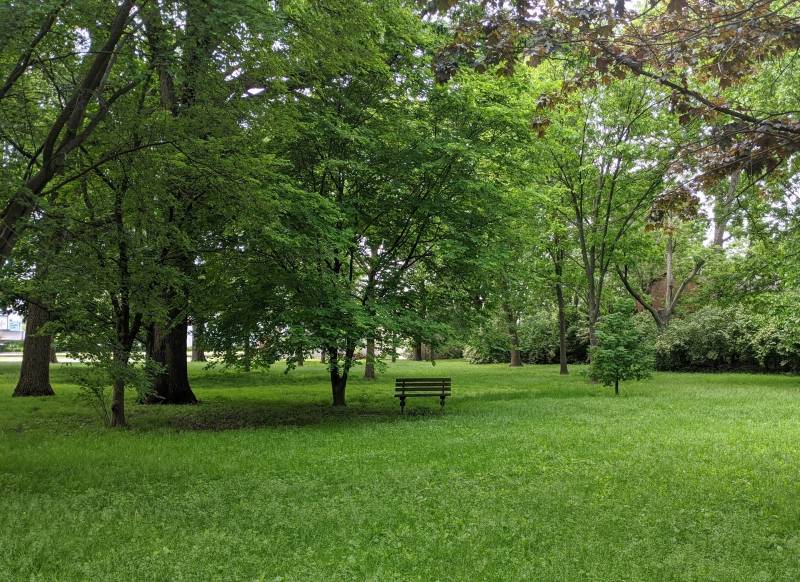
Photo by Katriena Knights.
In a bit of a sequel to last month’s article, we start today in Leal Park, just off University Avenue in Urbana. Leal is a small, grassy park with a gazebo and a memorial garden, as well as some picnic benches where you can stop to enjoy lunch. It’s also an erstwhile graveyard, and the grass under your feet might be sheltering a Native American or a pioneer from long ago.
Until Mount Hope and Woodlawn Cemeteries opened, Urbana burials occurred in private or church graveyards, or at Old Urbana Cemetery — sometimes referred to as the Pioneer Cemetery — now repurposed as Leal Park. The first recorded burial here was that of Sarah Busey in 1854, but Native Americans had used the same area at least since the 1820s; Chief Shemauger, whose name graces another Urbana park, was buried here. An immigrant group on their way to Peoria also buried some of their number here when part of the group died of malaria. The burial ground was never platted, though, so there were no formal lots and no records of exactly who was buried where.
After the arrival of Mount Hope and Woodlawn, however, the original cemetery fell mostly out of use. Some soldiers were laid to rest here, most of them having belonged to Samuel Busey’s regiment. The land belonged to the Busey family starting in 1831, when it was included in a larger tract purchased by Matthew Busey. With fewer burials, the cemetery was poorly tended, and in 1902 the city of Urbana ordered the remains removed and reburied elsewhere. However, it was not possible to identify all the bodies buried there. The city commissioner at the time was Thomas Leal, and he did all he could to locate relatives, sending letters in attempts to connect the bodies to living families. He also supervised the reinternments. If no living relatives were to be found, the gravestones were laid flat over the site and covered over.
In 1903, the Buseys donated the land to the City of Urbana to become the first public park. It still carries Thomas Leal’s name in honor of the tireless work he put into reclaiming the cemetery as public lands. His legacy also includes extensive work establishing the public school system in Champaign-Urbana, and he was instrumental in the process that ended with C-U’s being chosen as the location for the University of Illinois.
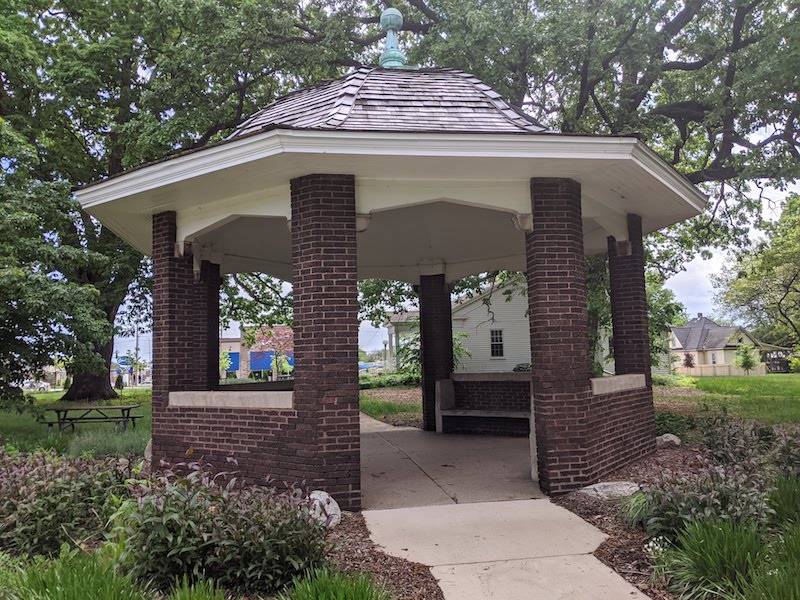
Photo by Katriena Knights.
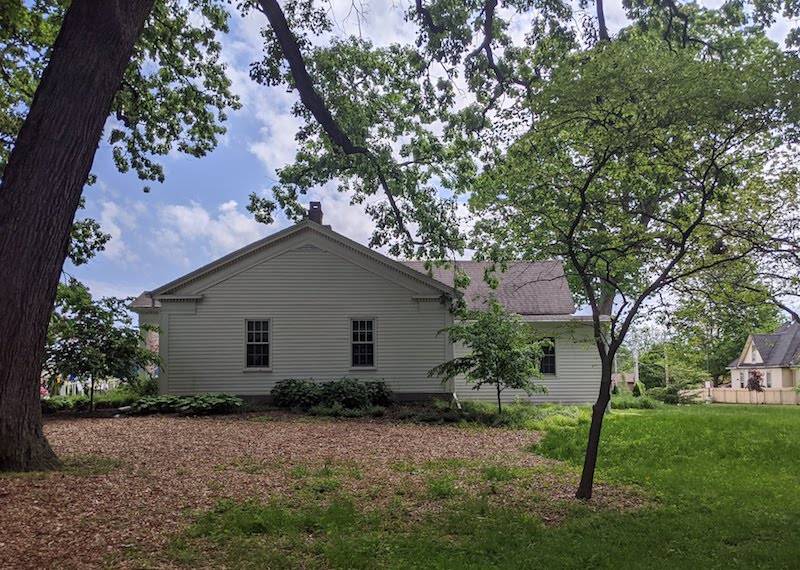
Photo by Katriena Knights.
There are two major structures of interest at Leal Park. The gazebo was built in 1941, but there is very little information about it. In 1976, a Greek-revival style cottage was relocated from Springfield Ave. to Leal Park, where it eventually became the home of the administrative offices of the Urbana Park District. Gamers will find two stops here at the gazebo and at the main signage area.
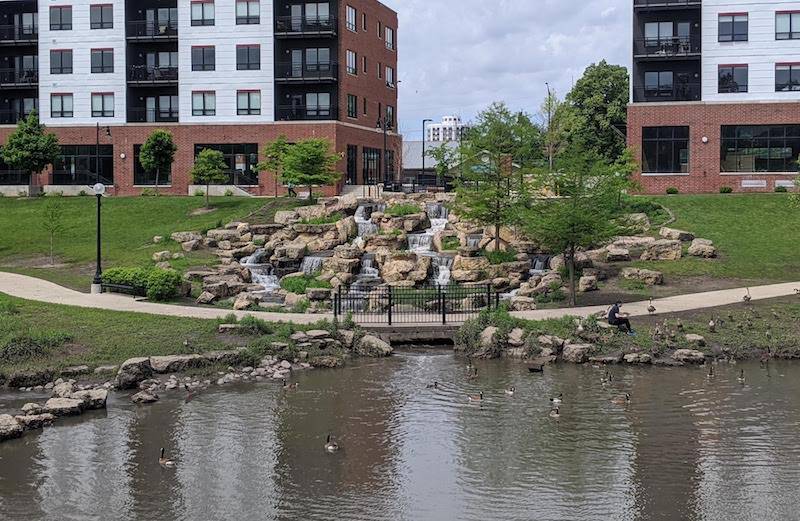
Photo by Katriena Knights.
The Boneyard Creek 2nd Street Detention Basin isn’t a very picturesque name, but the actual location is an oasis of green and water not far from downtown Champaign. The basin as it exists now was constructed as part of a plan to reduce flood danger along the Boneyard Creek. The site also serves as a memorial to Burnham City Hospital, which served Champaign-Urbana from 1895 to 1992.
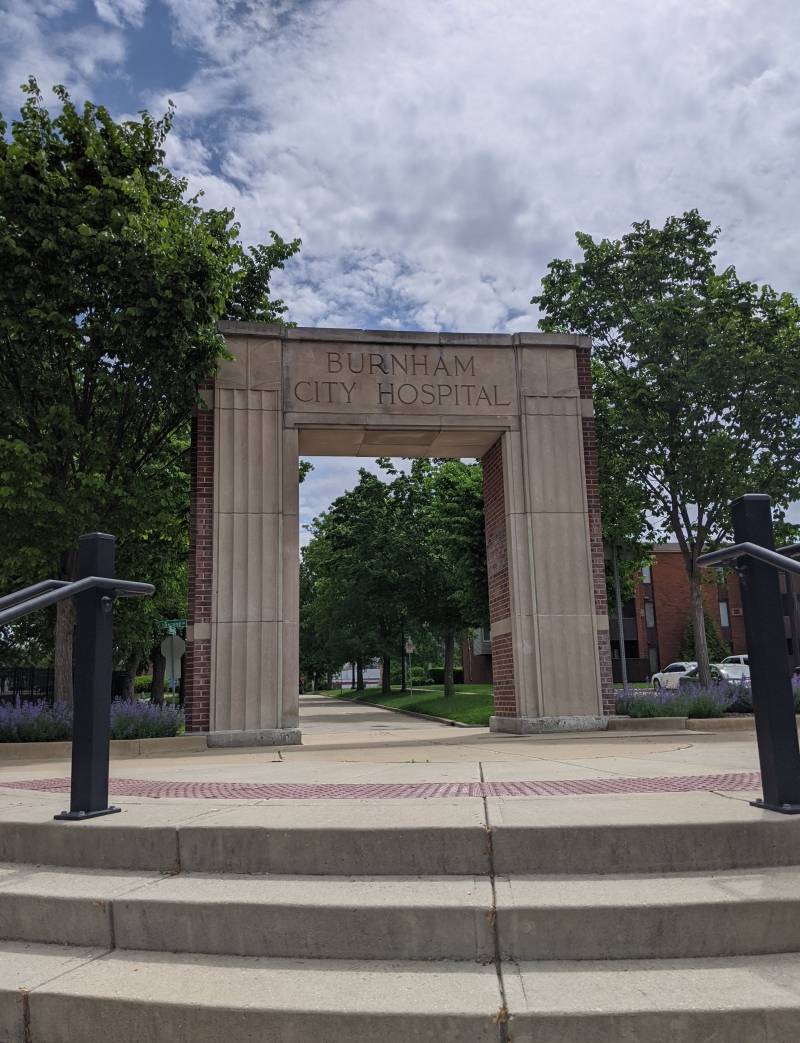 Photo by Katriena Knights.
Photo by Katriena Knights.
Boneyard Creek itself is a tributary of the Salt Fork Vermillion River and runs almost 4 miles through C-U. It flows through the Engineering campus at the University of Illinois, and apparently served as the location for a Freshman hazing ritual involving tug-of-war at the turn of the century. Archives of the Daily Illini feature poems written to and about the Boneyard. Its tendency to flood has been a source of research as well as trepidation for the U of I, with occasional floods halting construction projects and leading to the creation of the detention basin and other work to mitigate flooding and control the water flow. Garbage and pollution have also plagued the creek since its earliest days but have improved as the renovation efforts have begun.
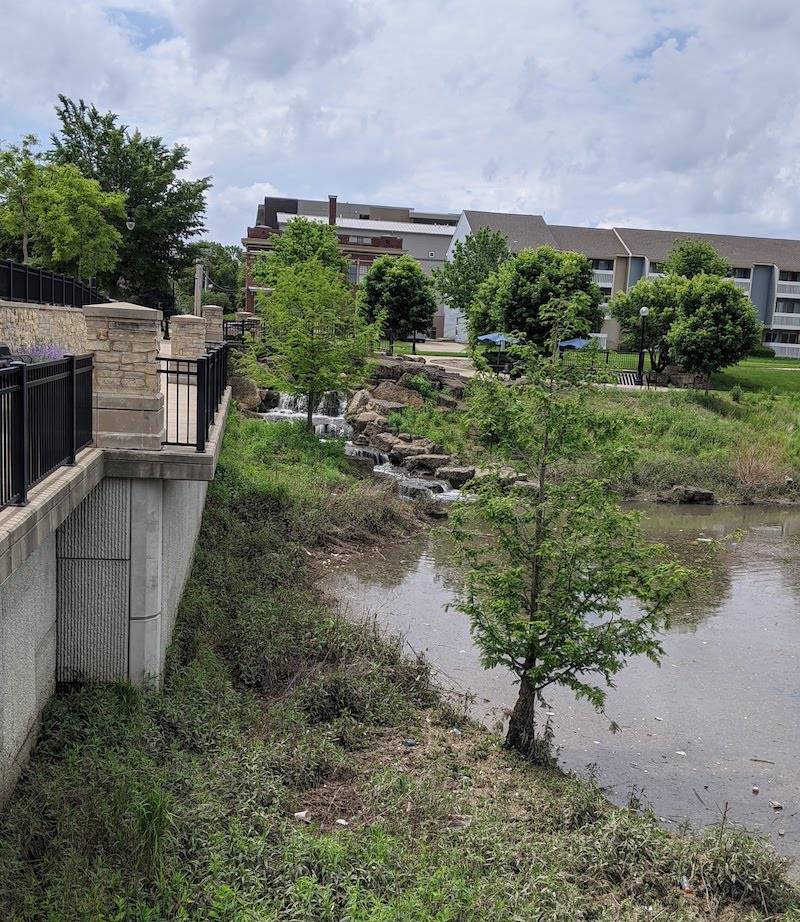
Photo by Katriena Knights.
The Boneyard was originally known as the Silver Creek, but the less poetic name was attached to it as early as 1865 and has stuck in spite of various efforts to change it back. The origin of the name is debated, but is generally attributed to an incident where large quantities of bones were found during drainage efforts. Exactly when or how this happened is uncertain, but it is generally believed that the bones weren’t human.
The construction of the 2nd Street Detention Basin is only Phase Two of a seven-phase plan to improve Boneyard Creek and prevent flooding along the waterway. It also provides a scenic backdrop for events in Champaign, including the yearly Boneyard Arts Festival (unfortunately postponed this year). The basin features a fountain (which serves as a game stop), terraced stone landscaping, flowers, flocks of geese, benches, and decorative brickwork. It’s a place better seen than described, so enjoy the photos below.

Photo by Katriena Knights.
As businesses begin to reopen, spend some time in the fresh air and enjoy the weather before the heat of summer drives us inside again. These historical locations give you a chance to see some of the earliest history of our area while getting some exercise and, yes, catching some Pokémon. As always, be courteous and stay safe!








